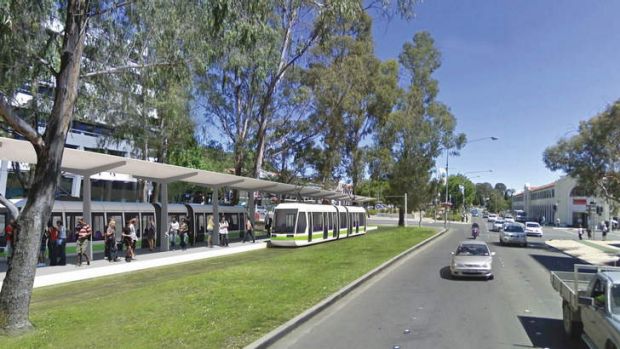Local governments rarely get the opportunity to completely makeover and enhance the main entry to the city – and the city centre itself. Such a time has come for the Australian Capital Territory (ACT) Government.
In Canberra, so many factors have come together, some good–some not so good, to deliver what planners, urban designers, architects and landscape architects all dream about.
There now exists the opportunity to not just influence the design of a site, a precinct or a city block, but several kilometres of housing, transport, architecture, green infrastructure and everything involved with a city urban corridor that is Northbourne Avenue.
Northbourne is not just the main road entrance to a city, it is far more than that. This avenue is a front door to the nation’s capital. It is a key part of the profile of the national capital of Australia. Or at least it should be!
This redevelopment is the chance to do something really creatively exciting, to be a world’s best example of urban infrastructure, landscape design and architecture for the 21st century.
What happens along Northbourne should quickly become part of the future marketing of Canberra as a modern inland city and should enhance the international profile of Australia’s national capital.
It is now the 21st century. Things have moved on, the challenges are different to the early 20th century. It is time for some new visions and new creative, people and climate-focused solutions.
History: Canberra is the capital city of Australia. With a population of 381,488, it is Australia’s largest inland city and the eighth-largest city overall. The city is located at the northern end of the Australian Capital Territory (ACT), 280 km (170 mi) south-west of Sydney, and 660 km (410 mi) north-east of Melbourne.
The site of Canberra was selected for the location of the nation’s capital in 1908 as a compromise between rivals Sydney and Melbourne, Australia’s two largest cities. It is unusual among Australian cities, being an entirely planned city outside of any state, similar to Washington, DC in the United States, or Brasília in Brazil.
Following an international contest for the city’s design, a blueprint by American architects Walter Burley Griffin and Marion Mahony Griffin was selected and construction commenced in 1913. The Griffins’ plan featured geometric motifs such as circles, hexagons and triangles, and was centered on axes aligned with significant topographical landmarks in the Australian Capital Territory.
The city’s design was influenced by the garden city movement and incorporates significant areas of natural vegetation that have earned Canberra the title of the “bush capital”.

